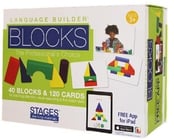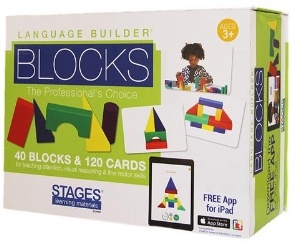11 Strategies to Help Your Child with Autism Develop Fine Motor Skills
Fine Motor Skill Milestones
Fine motor skills are the coordination of small muscle movements. Fine motor skills are the ability to make movements in our eyes, wrists, hands, and fingers. Many everyday tasks require strength, dexterity, and fine motor skills. Fine motor skills need to be learned and developed as children get older.

Download FREE Sample Lesson Plan: Drawing Simple Pictures
Listed are some typical fine motor skill milestones by age:
- Age 0-6 months: Reflexive grasp at birth, voluntary palmar grasps, and controlled reach.
- Age 6-12 months: Ability to reach, grasp, and release objects. Development of pincer grasp.
- Age 1-2 years: Ability to build small piles, turn the pages, scribble, tie knots, self-feed.
- Age 2-3 years: Ability to use one hand consistently in activities. Can hold object with fingers and thumb. Incorporates whole arm and wrist movements.
- Age 3-4 years: Ability to manipulate materials (rolling, patting, pounding, etc.). Use of non-dominant hand.
- Age 4-5 years: Ability to dress and undress independently. Ability to write, copying letters and numbers.
- Age 5-6 years: Ability to use a 3 fingered grasp of a pencil and use fingers to move it. Ability to cut and draw independently.
- Age 6-7 years: Ability to tie shoelaces. Endurance during controlled writing movements. Writes on lines.
- Age 7-8 years: Ability to write legibly.
There are many accessible and fun activities for children to participate in that encourage the development of fine motor skills.
Read on for some ideas and take a look at our free ARIS Lessons to use for fine motor development: Tracing Simple Pictures and Dot to Dot and Stringing Beads
Holding Crayons and Scribbling
Grab some crayons and allow your child to scribble freely! You can lay out crayons and a piece of paper for your child to explore and become comfortable with the materials. For a child beginning to explore using a writing tool, jumbo or triangular crayons are easier to grasp. Playing your child’s favorite music in the background may help motivate and excite your child as you scribble. “Let’s color!” and “Time to draw!” are simple prompts that can be used during this activity. Some children may need hand-over-hand guidance to begin becoming comfortable with scribbling. It is important to communicate progress as your child continues scribbling, congratulating them as they express themselves through this unstructured art time!
Tracing Lines
Tracing lines is a great technique for your child to develop their fine motor skills.
Offer a few sheets of paper and crayons that will be comfortable for your child to use. In the beginning, it is best for children to practice tracing over pre-drawn straight lines on paper. Children may be prompted by simple phrases such as “Trace the line” or “Draw along the line.” Depending on the proficiency of your child’s fine motor skills, they may need hand-over-hand assistance when beginning to learn to trace. As your child becomes more confident in their skills, pre-drawn lines may be drawn as dotted lines and your child can practice tracing other shapes such as zig-zags, curves, or waves.
Shape Tracing
Fill a baking tray with colored sand, salt, or flour and add foam or wooden shapes on top of the tray! If your child has developed a pincer grasp, they may use their pointer finger to trace the shapes in the sand. Using simple prompts such as, “Trace the shape!” will encourage your child to explore the shape sizes and different lines and curves. Children may also use other tools to trace the outline of the shape in the sand, such as a marker or straw. You can also use painter’s tape to create shapes on the floor, which children may walk around and trace with their steps, further developing their motor skills.
Drawing Lines and Shapes
Using any preferred writing tool, children can practice independently drawing lines and circles! In this exploration, simple prompts such as “Draw a line!” or “Draw a circle” can be used. While practicing, children may also be encouraged to explore creating varying size lines and shapes. Children may also use different tools, such as crayons, pencils, chalk, or whiteboard markers to construct their lines and shapes. As your child becomes more comfortable with drawing lines and circles, they may move on to create other abstract shapes.
Coloring Within Lines
Practicing coloring within lines is a great way for your child to develop their fine motor skills and spatial abilities. Using preferred coloring tools and worksheets with pre-drawn shapes or pictures, children may be prompted to “Color in the lines!” Whether a child uses light, broad, scribbles or neatly colors in the whole section does not matter. This is a perfect activity to allow children to explore using different colors. Coloring within lines can be made more tactile by incorporating other materials. For example, you can create lines and shapes using liquid glue. Once the glue is dried, your child can use a paintbrush to paint within the shapes created.
Tracing Simple Pictures & Dot-to-Dot
The skill of tracing simple pictures and completing simple dot-to-dots leads to the development of more complex skills like copying then writing. Using any preferred coloring tools, children can learn to draw simple shapes or pictures by tracing or following a dot-to-dot figure. Simple prompts such as “Trace the picture” or “Connect the dots” can be used as your child explores tracing. Depending on your child’s level of comfort with tracking, there are worksheets available with solid, gray lines to trace or dotted lines. Children ready to trace more complex pictures can also use dot-to-dot images that are numerically or alphabetically ordered. Different tools and mediums may be used for exploring tracing. When a child is ready, they may also be given a blank sheet of dot paper or graphing paper to create their own images using the provided grids.
Drawing Simple Pictures
Once a child is ready to draw without the assistance of tracing lines, they may begin exploring drawing simple pictures. For this activity, the child should be presented with blank sheets of paper and preferred drawing tools. As a child begins learning to draw simple pictures, first they will be most comfortable copying simple shape-based pictures, then drawing independent shape-based pictures, then copying pictures freehand. In all stages of exploration, there are many supports you can provide. For example, some children may need simple image examples to follow. Prompts to be used while drawing may simply be, “Draw a house” or “Draw a flower.” To encourage creativity, you may draw a squiggly line or doodle on a sheet of paper and allow the child to complete a drawing around the squiggly line.
Working with Clay
Working with soft modeling clay or therapy putty is an excellent way for children to strengthen their fine motor skills and practice creativity through imaginative play. Children can explore playing with the dough through squishing with fingers and palms, pinching dimples or pinching off pieces, poking with fingers, pounding or hitting the dough, or stacking piles or handfuls of dough on top of each other. Prompting your child, “Do this” and modeling clay skills may be helpful. Clay play materials or common objects can be incorporated to create more dynamic play. Pressing blocks, letters, or beads into the clay, hitting the dough with a hammer, or poking the dough with toothpicks or popsicle sticks further encourage fine motor skills.
Stacking Blocks
 In this activity, children will gain the fine motor skills necessary to stack blocks. It is important to use small or medium size blocks that the child can easily lift and hold. To begin, a child can simply practice picking up the block and dropping it in a bucket, focusing on hand strength and skill holding the block. When the child is ready to practice stacking blocks, you can prompt them, “Stack the blocks” and use physical assistance to help your child place the blocks on top of one another. Once your child is able to independently stack blocks, you can incorporate more complex tasks, such as building multiple stacks to use in bowling.
In this activity, children will gain the fine motor skills necessary to stack blocks. It is important to use small or medium size blocks that the child can easily lift and hold. To begin, a child can simply practice picking up the block and dropping it in a bucket, focusing on hand strength and skill holding the block. When the child is ready to practice stacking blocks, you can prompt them, “Stack the blocks” and use physical assistance to help your child place the blocks on top of one another. Once your child is able to independently stack blocks, you can incorporate more complex tasks, such as building multiple stacks to use in bowling.
Cutting
Children will learn to cut paper using child-size or adaptive scissors. To begin, it is important that your child is able to maintain correct grip and positioning on the scissors without assistance. Then, the child should practice opening and closing the scissors. When your child is ready to begin cutting, use a thick piece of paper such as card stock or construction paper. Draw a line or have your child draw a line if they have mastered drawing straight lines. When ready, prompt, “Cut the paper.” Once your child can independently cut straight lines, they can then practice cutting different types of lines including zig-zags, wavy lines, and dotted lines, and then cutting shapes on different sizes and thicknesses of paper.
Pasting
Pasting will allow children to learn to apply paste to stick paper and other craft materials together. Present your child with different types of paste, such as glue sticks, liquid glue, or rubber cement. Pastes can be applied in a variety of ways, through using a glue stick, pouring bottled liquid paste, or using a paintbrush. Presenting your child with a selection of craft materials such as foam pieces, popsicle sticks, pipe cleaners, pom poms, cotton, or sequins will allow for creative exploration. When ready, you can prompt your child, “Let’s do some pasting.” Children may then try using different physical methods using the pastes to connect craft materials.
Dressing Skills: Zip, Button, Tie
Dressing skills are an essential part of daily living. The goal is for children to learn to fasten zippers and buttons, to tie shoes, and to handle other fine motor aspects of dressing. Aspects of dressing, such as manipulating buttons and zippers requires sufficient dexterity and hand strength. To practice these motor skills, you can gather clothing items, bags, and toys that have zips, buttons, ties, Velcro, and fasteners. For beginners, it is helpful to include bigger size buttons and zippers to practice with until your child is ready to use smaller sizes. Introducing each material, children can be prompted to, “Zip the zipper,” “Tie the laces,” “Button the shirt,” etc. Playing with these zips, buttons, ties, Velcro, and fasteners is entertaining for children to tinker with, and this practice can even happen mindlessly while your child watched television or listens to music and fidgets with the items. Once comfortable, children can apply their skills to the buttons and zips on their own clothing.
Stringing Beads
Stringing beads is a foundational fine motor skill that plays and important role in the development of more advanced fine motor skills, teaching dexterity and hand muscle strength. Beads come in a variety of shapes, sizes, and colors, so it is easy to find beads that will best suit your child’s learning. To string the beads, different materials such as yarn, shoelaces, or pipe cleaners can be used. To begin, place the string and beads in front of your child, allowing them to explore the materials. Model threading the string through the bead, and model again hand over hand if needed, while giving the prompt, “Do this.” As your child becomes confident in their skills stringing beads, you can encourage creating patterns with the beads.
Many of these fine motor skill activities can be worked on simultaneously. The activities suggested in this article aid with the development of fine motor skills as well as cognitive development, creativity, and abstract thinking. Each of these activities may be adapted to suit your child’s specific needs. Additional materials are available.
Free Download: ARIS Lesson 52 - Tracing Simple Pictures and Dot to Dot
Free Download: ARIS Lesson 57 - Stringing Beads
This resource was created as a supplement for the Language Builder: Academic Readiness Intervention System (ARIS) complete early autism curriculum, Lesson #116, Drawing Simple Pictures. Download a free copy of the lesson and learn more about the ARIS curriculum.






